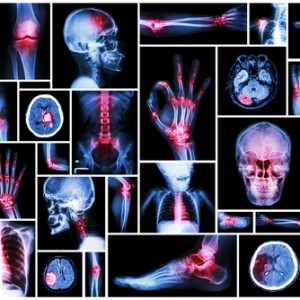 A recent study published in The Egyptian Journal of Radiology and Nuclear Medicine found that flow-mediated vasodilation (FMD%) and carotid artery intima-media thickness (CIMT) measured with high resolutions B-mode ultrasound are effective imaging methods for early prediction of subclinical atherosclerosis in patients with rheumatoid arthritis.
A recent study published in The Egyptian Journal of Radiology and Nuclear Medicine found that flow-mediated vasodilation (FMD%) and carotid artery intima-media thickness (CIMT) measured with high resolutions B-mode ultrasound are effective imaging methods for early prediction of subclinical atherosclerosis in patients with rheumatoid arthritis.
Rheumatoid arthritis (RA) is a systemic autoimmune inflammatory disease that affects synovial joints and leads to chronic pain, bone erosions and progressive disability. Nearly 1% of the adult population in the United States has RA, and has an overall world prevalence rate from 0.5% to 1%. The presence of chronic immuno-inflammatory process is responsible for subclinical atherosclerosis and increased incidence of cardiovascular disease events in these patients. Endothelial dysfunction mediated by inflammation is thought to be an important event in early atherogenesis and also contributes to the development of clinical features in the later stages of vascular disease including progression of atherosclerotic plaque. Post occlusion flow-mediated vasodilation (FMD) of the brachial artery using high sensitivity ultrasonography has been found to be a feasible method to test endothelial function in patients with RA. Another clinically useful tool indicating subclinical atherosclerosis is to measure carotid artery intima-media thickness (CIMT) with high resolution B-mode ultrasonography, providing non-invasive anatomic structural measure of subclinical atherosclerosis.
In their study titled “Brachial artery flow mediated dilatation and carotid intima media thickness measured by high resolution B-mode ultrasound in patients with rheumatoid arthritis,” Alsiagy Salama from the Faculty of Medicine, Tanta University in Egypt and colleagues conducted a prospective case–control study in 50 patients with a diagnosis of RA and 50 healthy age controls. All participants underwent carotid and brachial arteries ultrasound for measuring CIMT and FMD%.
Results showed that compared to controls, patients with RA had higher CIMT and significantly lower FMD%. In patients with RA, results showed a relationship between CIMT and the patient’s age, disease duration, systolic blood pressure, HAQ, DAS, CRP and HDL-c. However, results did not reveal a relationship between brachial artery FMD% and the clinical and laboratory parameters in patients with RA patients.
Researchers concluded that FMD% and CIMT assessed with high resolution B-mode ultrasound are effective approaches for early prediction of atherosclerosis in patients suffering from rheumatoid arthritis and enables early treatment and control of vascular complications.


